by Sam Tackeff | Jan 1, 2013 | chicken, Pantry Staples, Turkish
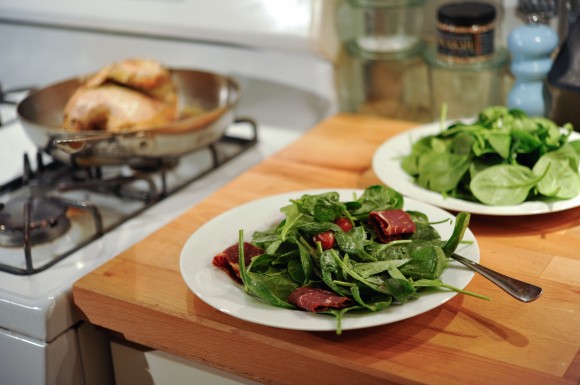
Why, hello! Has the first day of this new year treated you well?
Our celebrations were quite low key last night because we’ve both been a little under the weather. We started out with the movie Haywire, but despite my serious strong-girl crush on Gina Carano, the film committed the cardinal sin of bad action films: it was boring. So boring, in fact, that I turned it off after twenty minutes. We salvaged the evening with pizza, ice cream and several episodes of MI-5, and made it (reluctantly) until midnight.
Once we realized that the world wasn’t ending, we passed out and slept in until 10. Glorious!
Today we gathered ourselves and ventured out into the world. Devon needed snow boots, and I hadn’t left the house for a while. We drove to the L.L. Bean outlet, ate lunch at the salad bar at Whole Foods, and came back to work on a few new projects, draft some more resolutions, and think about my word of the year. For dinner, I thought I’d set us straight with some salads and roast chicken.
This is one of my favorite meals because it’s simple, light, and relatively foolproof. Which of course means that I had my first kitchen failure of the year – I started my chicken skin side down in my greased pan, but the skin decided to stick nearly entirely to the pan when I flipped it over. Alas! Good thing that rosemary and oregano infused chicken minus the skin still tastes good!
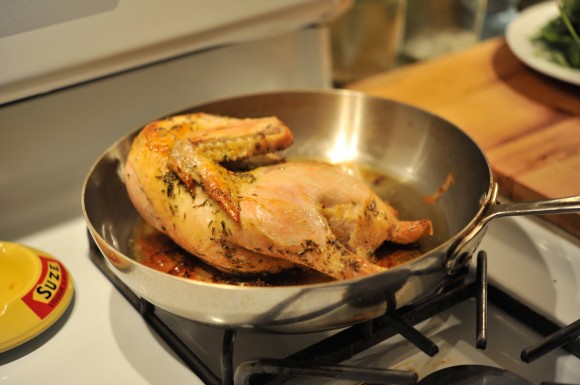
I topped my salad with some tomatoes, a few baby mozzarella balls, good black olives, and some rolled up slices of pastırma, a Turkish cured meat. I made a dressing with some of the pan drippings, some of the olive oil that I keep my black olives in, and a little bit of sherry vinegar. It was a solid start to the year!
After dinner, I grabbed all of our bones and put them in my little workhorse Crockpot to make a light stock overnight. I’ll probably use it for some soup lunches through the week. Nothing fancy, but you can never have enough chicken-water in the house. Meat tea!
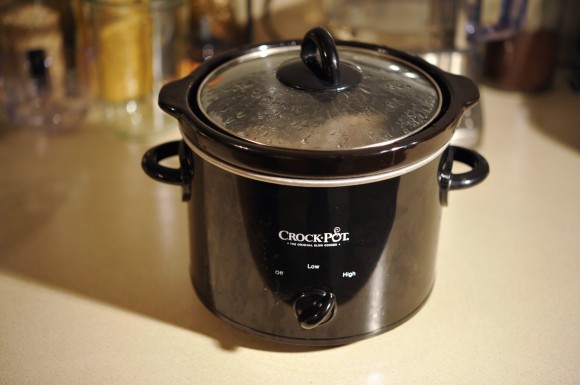
To top it off, we had kazandibi, a sweet Turkish dessert which means “bottom of the pot” and features a lovely layer of caramelization over a rich thickened milk pudding. In Turkey, pudding is by far one of the most popular forms of dessert, and pudding shops are more ubiquitous than pastry shops.
I picked up a few of these at Sevan in Watertown, and since they aren’t the easiest to make well at home, they were a real treat. Traditionally you’d top them with a dusting of cinnamon and maybe some ground pistachios, but since I’m impatient, I ate it cold from the fridge with nothing on it.
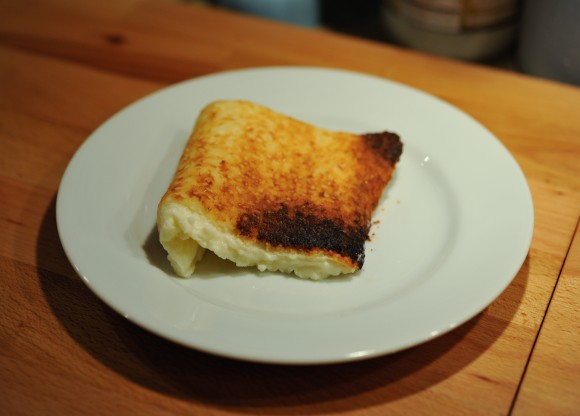
After dinner, I set to work making one of my favorite kitchen resolutions happen: wash all dishes and wipe down counters before going to bed each night. Nothing like waking up in the morning to a clean kitchen and feeling ready to start the day on the right note!
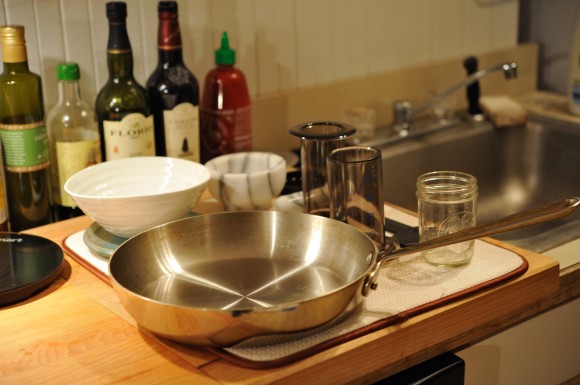
Here’s to a wonderful new year ahead of us!
by Sam Tackeff | Sep 13, 2012 | Challenge, chicken
The start of any challenge can be, well, challenging. I’ve been easing myself into things, cooking at home every night, making Pinterest boards with dinner ideas, and stocking up on necessities. With a few exceptions (mostly chocolate), I’ve actually been eating challenge-friendly food for the past week, so I’m hoping not to lose my mind too quickly.
In the morning, I started my day with a light breakfast – a sliced banana with a few spoonfuls of almond butter. Typically I like to eat a little bit more protein for my breakfast (and usually, it doesn’t even look like breakfast), but I was going for a run early, and didn’t want to overload myself. Now that I’m doing shorter, more intense workouts, I usually don’t like to eat much before exercise because I find that my stomach doesn’t cooperate as well as I’d like.
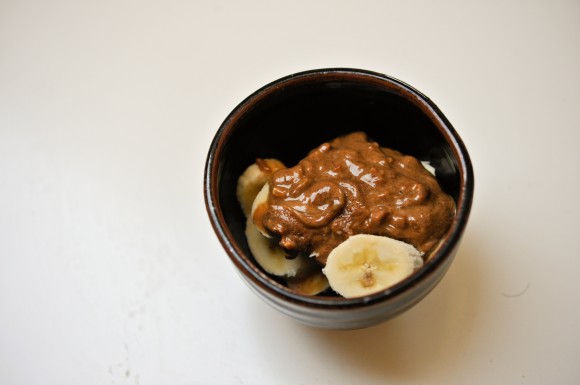
A few weeks ago, I signed up for a race. Let’s be clear, I don’t race. I don’t really run. At the gym, I spent months barely getting through 400m. warmups, because I had been sedentary for 8 months. But for some reason, I caught the crazy, and signed up. It was the middle of the night, I blame exhaustion. And so now, I have a little over a week to get ready for this thing, and so I’ve been running 3-4 miles a few times a week, in addition to two days a week of CrossFit.
Before convincing myself otherwise, I headed out to Fresh Pond to run (very slowly!) around the path. This place is pretty magical.

Fast forward to lunch, and I was hungry again. Steamed kale, and smoked fresh kielbasa, with a large side of raspberries. Kielbasa is one of those “minimally processed” foods I’m willing to partake in for this challenge – but I made sure to choose one with no additives or sugar. This is the turkey kielbasa from Trader Joe’s. It’s a little on the dodgy side of the “happy meat” requirements I subscribe to, but it’s really good. I just need to get the sausage grinder attachment for my KitchenAid.

In the evening, I got to pick up Devon from the airport, and we headed to the store to pick up dinner. Every so often we do the “choose your own salad bar meal” at Whole Foods, and this was one of those nights. Except, in anticipation of hungry afternoons this week, I opted to buy two rotisserie chickens (the second is half off), and shred the meat for the fridge.
I put together my dinner: spinach salad with lemon vinaigrette and raspberries, and a chicken leg with some mustard to dip. After shredding two chickens (and eating a quarter of one as I worked), this was all I could manage on my plate.
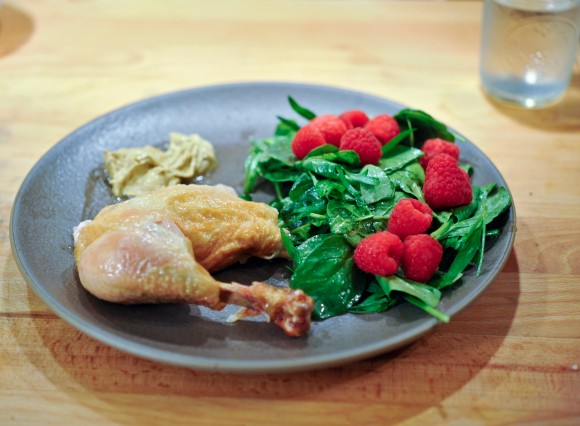
Before heading to bed, I froze one of the chicken carcasses in the “miscellaneous bones for stock” bag, and put the other in my very small slow cooker to make some overnight chicken broth.
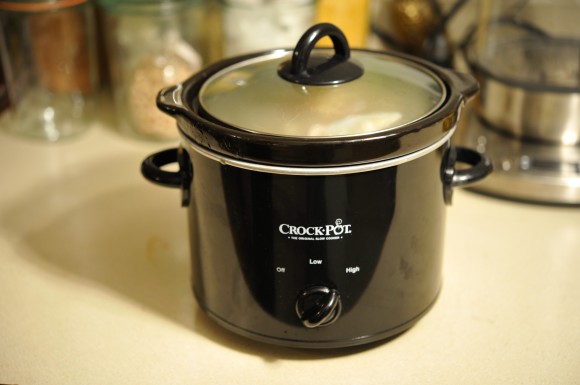
One day down, 59 to go!
by Sam Tackeff | Sep 26, 2010 | Asian, Books, Challenge, chicken, Filipino
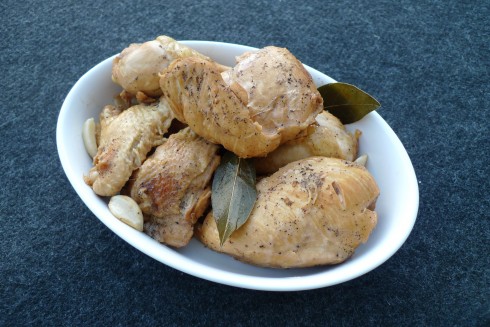
“Filipino food is delicious because it is cooked with love and always served with generosity and hospitality.”
One of the greatest pleasures of working at Omnivore Books is getting to learn about different cultural cuisines.
For the second Foodbuzz Next Food Blog Star assignment, we’ve been tasked to tackle a classic dish from another culture. My immediate thought: Chicken Adobo. Pungent, tasty, and shockingly easy to make, Adobo is a staple of Filipino cuisine.
Filipino food is finally getting its moment in the sun. In Los Angeles, good Filipino restaurants are ubiquitous and the younger generation are clamoring to embrace their cultural food roots. In New York, Amy Besa and Romy Dorotan created a sensation with their restaurant Cendrillon in Manhattan, and more recently moved out to Brooklyn to open the Purple Yam. Here in the Bay Area, Filipino restaurants are on the rise too, and food trucks Adobo Hobo, Hapa SF, and Senor Sisig are producing both contemporary and traditional versions of Filipino classics.
A few months ago, Filipino chef and cookbook author Amy Besa came for a talk at Omnivore Books. To be honest, having grown up in New Hampshire, I had never experienced true (or even bastardized) Filipino cuisine. While Besa spoke, I feverishly took notes.
In addition to being an incredibly warm and friendly woman, Besa is above all an intellectual. “If you are going to write a cookbook,” she elaborated, “I would recommend that you read a lot first. And use food to learn about history. If you try to trace back to where your food came from, you are doing history, and all of a sudden [history] is very exciting!”

(Photo: Allison Michael Orenstein, Time Out NY)
“Filipino food is fundamentally about balance, subtlety, nuance and harmony.”
People tend to itemize Filipino dishes rather than contextualize them. A good way to think about any cultural cuisine is to look at it from a historical perspective: food that is ours, and food that is borrowed. The Philippines experienced a long history of colonialism and occupation, and the food culture was greatly influenced over time. Besa noted that “Filipinos were very good at borrowing foods – the foods that they liked, they indigenized.”
Arab traders had been passing through for eons, and over several hundred years the Philippines were ruled by Spain, and then really ruled by Mexico. You can see this in influences such as Pampanga Bringhe – the Filipino version of Paella (made with sticky rice with coconut, turmeric, and native chicken.) There were very few influences from Mexico, but those include tamales made with rice, and other crossovers such as the use of lye.
Existing in Southeast Asia, they also had many influences from across the region. Immigrants from the Fujian mountains couldn’t use a lot of vegetable oils because they were cost prohibitive to the poor Fujian, so they used pork as fat, which was brought over to the Philippines. Then the Cantonese came with their cultural influences, and as richer communities they brought lighter foods such as stir fries.
In the 50’s, the United States came to occupy the country. Besa noted, regretfully, “Television came on in the 50’s and the big companies started cooking shows to promote their products (and in doing so destroyed generational culinary transfer).The new medium got totally divorced from the values of food you got from your grandmother.”
Besa made it her mission to preserve some of the old ways in her book “Memories of Philippine Kitchens“.
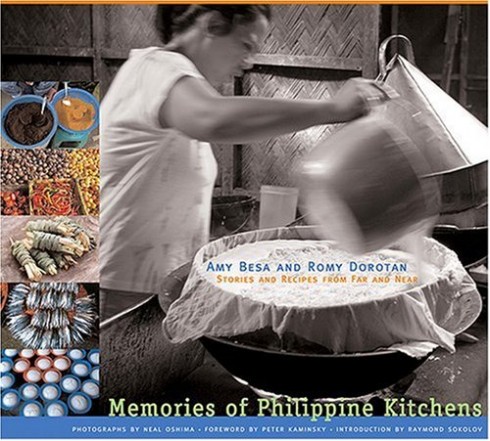
“No matter how rich or poor – Adobo is always on the table, and there are universal rules.”
In many Filipino dishes — including Adobo – a traditional marinade technique, Sinigang – a soup of meat or seafood with tropical fruits, and Kinilaw – a seafood preparation similar to ceviche — the common flavor is sourness. Besa explains this as defining the Filipino palate. The ingredients are the key to the culture, and “Every ingredient you put into your food has got to mean something”. In her restaurant, Besa imports coconut sap vinegar, heirloom rice, and salt from the Philippines. “Everytime I use heirloom rice, I eat up the price – it supports a farmer – that’s the taste of our soil. Of our culture. For me, that’s how I show my pride. It’s not always the best business model, but it is what makes us happy.”
When I set out to choose a recipe for Adobo, I thought about Amy’s rules for creating a recipe and the importance of dealing with ingredients and showing respect for the dish. A good recipe will explain how the dish came about into being, and what you are trying to do with it. You find a lot of truths in classic combinations. You use the very best ingredients.
There are endless combinations of Adobo recipes, but the key components are the sweet, sour, and slightly spicy flavors infused in the meat and vegetables. The technique has been native to the Philippines for centuries, and it was only after the Spaniards came that it was renamed. (Adobo is a Spanish word for the marinades in Spain and Mexico that slightly resembled the Filipino dish.)
For my version of a Filipino Adobo, I used chicken, soy sauce, rice vinegar, coconut milk, bay leaves, black peppers, and chiles. I made some modifications based on what was in my own kitchen (ie: low sodium soy sauce, and lite coconut milk), but the beauty of Adobo is that as long as you have that wonderful sour flavor from the vinegar, and the sweet coconut, it tends to turn out well every time.
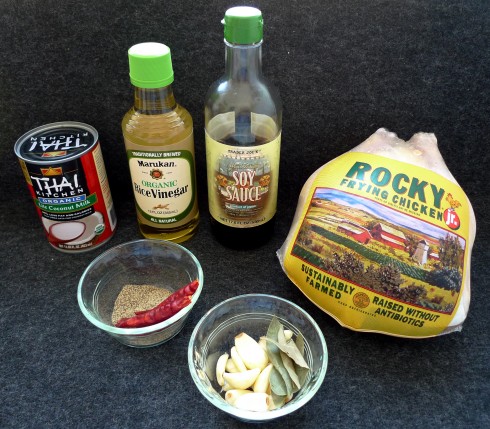
“Cookbooks are a roadmap to our identity, our history, and our roots.”
When Besa spoke about creating the cookbook, I immediately felt moved by her influences and how thoughtful she was about the process.
“I first had to make my cookbook really personal – my love of food comes from my grandmother. It’s a way of preserving memory. Ask a person who is dying about food memories. … Every family should record their treasured recipes…. In generations past, you knew where your food came from. Your Grandmother wouldn’t take shortcuts – it would be the best.
Her first rule of writing cookbooks is to find a muse. For her, it was Doreen Gamboa Fernandez – whose books led Amy to learn more about Filipino foods. She re-read them every year to make her understanding of Filipino food and culture deeper.
It took Amy and Romy four years to put together this book. They traveled back to the Philippines, where she hadn’t been since she had left Manila 30 years before, during a period of political unrest. She traversed the country taping oral histories. What’s your name? How do you do this? “[It is] amazing what you can discover. You become very attuned to the ingredients. The knowledge of the people [like being acutely aware of the stages of a coconut] – just amazing – once you accumulate all that information, you raise the level of information by seeing universalities of all things.”
At one point, an external editor tried to take it over. Besa was adamant: “You can not take out Mahjong. She wanted to cut out the personal. Her notes were kind of racist – too much about grannie, boring.”
For me, “Memories of Philippine Kitchens” has become one of my most treasured cookbooks on my shelf. The material was totally new to me, and I realized that there was so much to discover about my own food and cultural roots — it has inspired me to start writing my own food histories.
“If you really love and respect your culture and food, you would not come up with anything less than the best.”
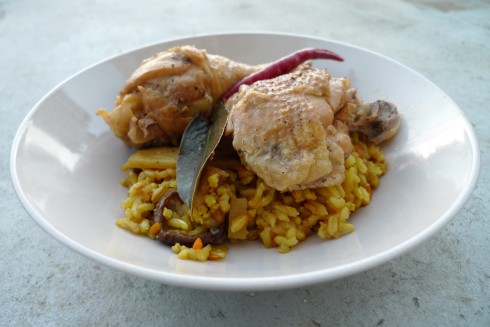
Chicken Adobo
Excerpted from Memories of Philippine Kitchens by Amy Besa and Romy Dorotan (Stewart, Tabori & Chang, 2006).
Serves 4 to 6
This is the recipe we use at the restaurant. The coconut milk helps keep the chicken moist and it makes a rich sauce. We serve this with Mushroom and Bamboo Shoot Rice (recipe follows) and sautéed mustard greens or bok choy. There are countless variations of chicken adobo; Mary “Inday” Gancayco serves a memorable mixture of chicken and pork adobo coated with mashed chicken livers and topped with fried garlic.
Marinade:
1 1/2 cups rice vinegar
1 cup coconut milk
1/4 cup soy sauce
12 garlic cloves, peeled
3 bay leaves
3 whole birdseye chiles
1 1/2 teaspoons freshly ground black pepper
One 3 1/2-pound whole chicken, quartered and cut into pieces
In a large nonreactive bowl or heavy-duty, resealable plastic bag, combine all of the marinade ingredients. Add the chicken pieces and turn to coat in the marinade. Refrigerate for at least 2 hours or overnight.
In a large casserole or Dutch oven, heat the chicken and marinade over high heat. Bring to a boil, then reduce the heat and simmer, stirring occasionally to make sure the chicken is covered in the marinade, until the chicken is cooked through and tender, 20 to 25 minutes.
Transfer the chicken pieces to a large bowl, raise the heat to medium-high, and reduce the sauce until it is the consistency of heavy cream, about 5 minutes. Remove the bay leaves and chiles. Return the chicken to the sauce and cook until just warmed through.
* * *
Inspired by Besa’s suggestions in her book, I served the Adobo with a rice made with Shiitake mushrooms, bamboo shoots, and turmeric. For two people, I sauteed a half an onion (chopped) with a grated carrot, for a few minutes until soft. I then added 3 cloves of garlic (minced), and cooked for another minute. I then added 1/4 pound of shiitake mushroms, and 1/2 cup of chopped bamboo shoots, and 1/4 teaspoon of turmeric. I stirred, and added 1 cup of Koda Farms Multi-grain blend (brown rice, quinoa, etc.) from Rainbow Grocery, and topped with an inch of water. I brought it to a boil and set it to simmer for 45 minutes until cooked.
* * *
F0r more good reading – a few food bloggers whose posts on Filipino food have inspired me:
Arnold @ http://www.inuyaki.com/
Marvin @
MarketMan @ http://www.marketmanila.com/
Connie @ http://homecookingrocks.com/
Erika @ http://ivoryhut.com
by Sam Tackeff | Jul 11, 2010 | chicken, Salads
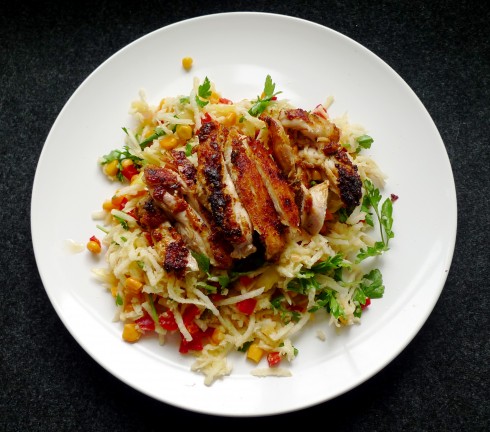
Dinner: No recipe here – Jicama slaw made with corn and pepper relish (homemade, although Trader Joe’s corn relish might be a good substitute) , a handful of chopped parsley, salt, pepper, lime and meyer lemon dressing made with good olive oil. A dash of this and a dash of that until it tasted right. Served with grilled chicken, my first attempt in my newly acquired (saved from the San Francisco streets) cast iron pan. Chicken thighs from Drewes. Simply seasoned with salt, pepper, Rancho Gordo ground red chile pepper, Rancho Gordo Indio Oregano, and Cumin. Seared to form a lovely spice crust.
Wine Pairing: Dashwood Sauvingnon Blanc 2009 – Vavasour Wines, Marlborough, New Zealand. Slightly overpowered by the jicama slaw, but overall, citrus notes went well with dinner. This is a lovely wine that I’m looking forward to drinking more of. Actually, dinner is over and I’m still drinking it!
(Disclaimer: I was sent this wine as a sample from Pasternak Wine Imports – purveyors of some extremely good wines. They are in my book of awesome.)

















